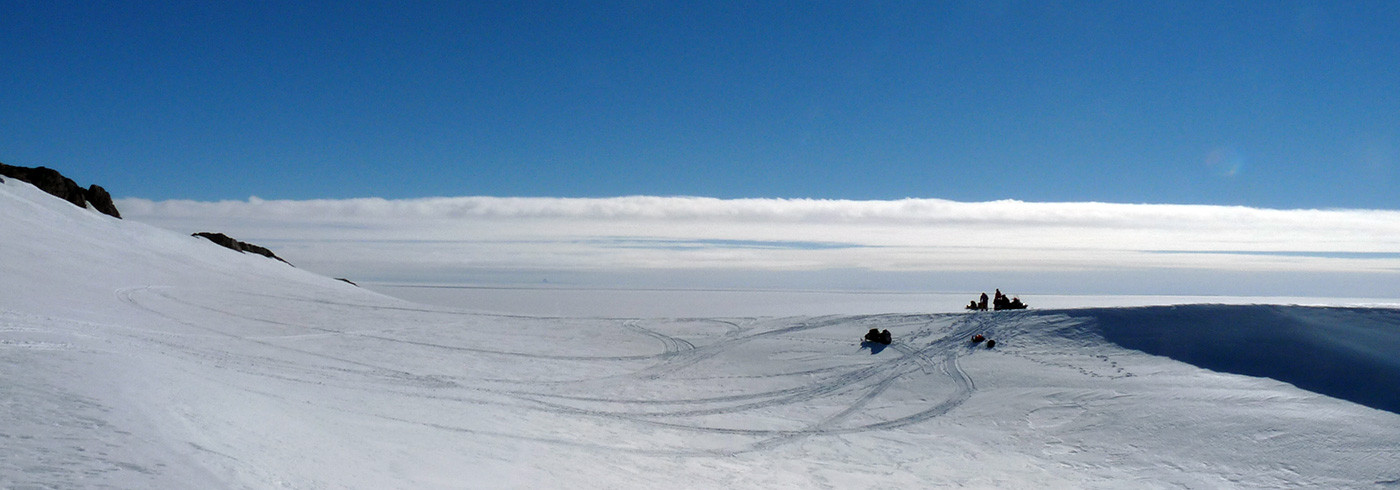
Sarah and Robin on the mountain top. Photo: Jon Harbor

Glacial striations, elongate scratches on bedrock surfaces, made when rocks at the base of the ice are dragged over the underlying bedrock. Photo: Jon Harbor

Erratics, rocks carried by the ice and deposited on a different type of bedrock, so we know the rocks had to have been moved. Photo: Jon Harbor
We had our best day yet for collecting samples and seeing evidence of past, higher levels of the east Antarctic Ice Sheet.
We returned to Grunehogna, a nunatak that we had visited a few days ago for reconnaissance work. We found good evidence that the ice sheet had formerly been much thicker and covering much of this nunatak. The evidence included glacial striations, i.e. elongate scratches on bedrock surfaces, made when rocks at the base of the ice are dragged over the underlying bedrock,and erratics i.e. rocks carried by the ice and deposited on a different type of bedrock, so we know the rocks had to have been moved.
We found both isolated erratic rocks at the tops of nunataks, and one large area with a mix of erratic rock types in a low area between two peaks. By the end of the day we had collected eight samples for laboratory analysis.

Calle and Andreas taking a break. Photo: Jon Harbor

Team Doctor, Fredrik Hägglund. Photo: Jon Harbor

Team Doctor, Fredrik Hägglund, celebrates his birthday with an amazing day of fieldwork followed by a special Swiss Roll cake baked by Jenny and the SANAE IV research station cook. Photo: Jon Harbor
The weather on January 3rd was very good, most of the day had little wind and bright sunshine, and the views from the peaks were exceptional. Although it took quite a lot of work to clamber up to the high points to collect samples, it was well worth the effort. At the end of the day we returned to SANAE IV research station and celebrated team doctor Fredrik’s birthday with a special Swiss Roll cake baked as a joint effort between Jenny and the base cook.

